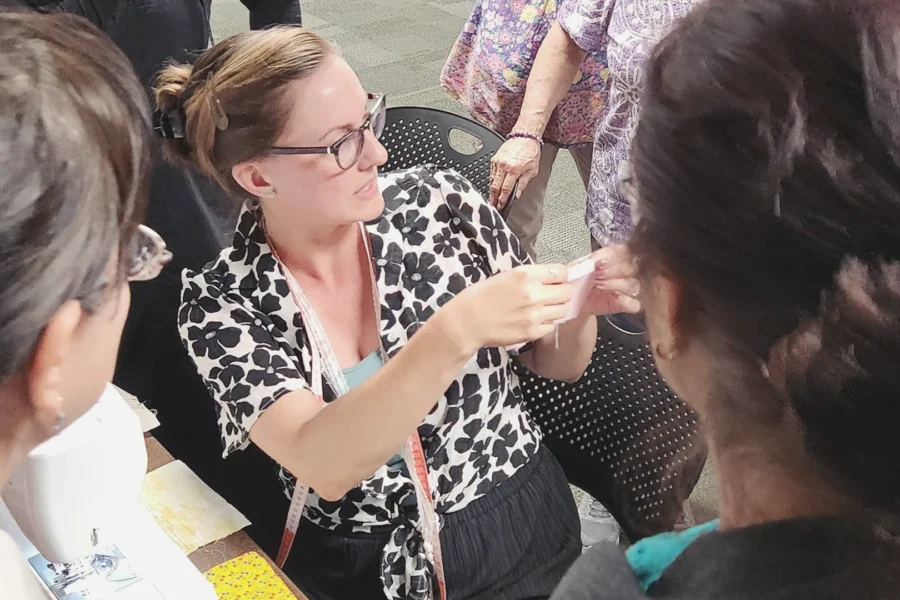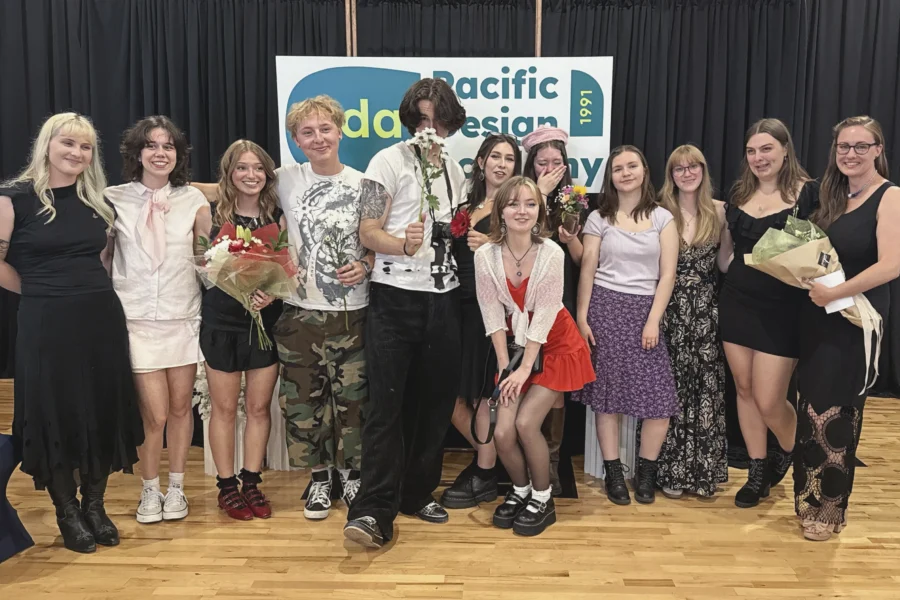Remember Mad Libs™?
A(n) ____(adjective)____ bird flies ____(adverb)_____ into a _____(noun)___. It turns out, Mad Libs isn’t just a fun way to pass the time on a road trip in the 90s, it’s also a useful teaching tool.
I teach fashion design at a small school in Canada. In second term I needed to have my students write descriptions of their final collections, but I knew from writing assignments I’d given them in 1st term, that many of them were not confident in their writing abilities. I also knew that this assignment would be more important to the students and would feel more personal than previous assignments like writing about the contributions of a specific designer, or the history of Velcro.
So I began thinking of ways to game-ify writing. And that’s how the Mad Libs exercise came about. I used this exercise to help students generate collection descriptions, but I believe it could be applied to a range of different use-cases. It’s ideal for any writing that feels high-stakes, but is also short, and somewhat formulaic.
The key difference between traditional Mad Libs and the educational version is that the educational version isn’t blind. When the students fill in the blanks, they can see the sentence they’re filling in.
The Process
First, I had the students find collections descriptions from established designers, then explain the purpose of each sentence.
Okay, what is this person telling us? After reading this collection description, what do you think is important to this designer? What does this person value? Are there any things you’re surprised were left out? etc.
Then, using the material from step 1, we collectively generated a list of the things designers communicate in their collection descriptions. Some of those things included:
- aesthetic
- theme
- the designer’s values
- the designer’s inspiration
- social commentary or message
- how the collection fits into the designer’s body of work, etc.
Next, I had the students anonymously write their own Mad Libs of collection descriptions. This might look like:
Inspired by the ___________ of ___________ era, my collection is intended to invoke feelings of __________. By juxtaposing __________ and ___________ I hope to challenge the viewer to question ___________. This collection, _______________, represents the culmination of many years spent perfecting the technique of ____________.
I then collected the Mad Libs, shuffled and redistributed them.
Finally, I had the students fill in the Mad Libs sheet they received from another anonymous student, but with information about their actual final collection.
The result of this exercise was that the students came up with much more engaging and elevated writing than I’d seen from them in the previous term! I believe there are several reasons this exercise was so effective:
The Rationale
This exercise is effective because it empowers the students to uncover the conventions of the genre on their own, with a process that is replicable for future use. I’ve only tried it with collections descriptions but I think this exercise would also work well with artists’ statements, and maybe even less creative bits of writing as well.
The second reason I think the Mad Libs exercise succeeds is that it separates the anxiety of writing personal, high-stakes content from the process of learning the norms of the genre. That separation affords the students the freedom to play and explore. By having the students read and dissect fashion collection descriptions on their own, they were able to familiarize themselves with the structure and language of that particular type of writing before having to apply it to their own work (a process which can feel intimidating).
Finally, I found that this exercise encourages flexibility and adaptability by exposing students to different frameworks for thinking about their work. That was an unexpected bonus! When I shuffled and redistributed the peer-generated Mad Libs, I realized that the tone of the Mad Libs (even though they were missing all the key words) varied widely. So I did my best to give students prompts that would challenge them. For example, I gave the prompts written by the student who is inspired by Soviet era brutalist architecture and grunge music to the student whose aesthetic can best be described as Polly Pocket workplace casual, and vice versa.
Shuffling and redistributing the anonymously-generated MadLibs ensured that, in addition to more neutral sentences like “I am inspired by _______” The students also encountered sentences that were decidedly different in tone than they would have chosen on their own. For example, the student with the lighter, more feminine aesthetic encountered phrases like “challenging viewers to _______” and “pushing the boundaries of ______ “ which prompted her to think differently about her own work. The student with the darker aesthetic, likewise, was challenged to think differently about his work. If his work was, for example, “a celebration of ______”, what was it celebrating?
In sum, I think this exercise is especially useful for ____(adjective)_____ writers who feel ____(adjective)_____ when faced with public-facing, personal writing assignments.

